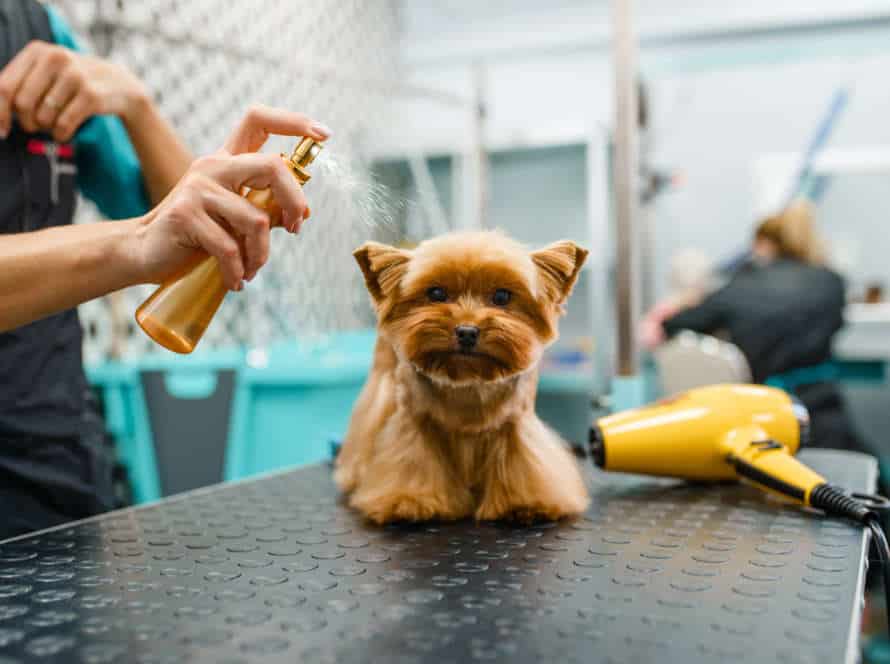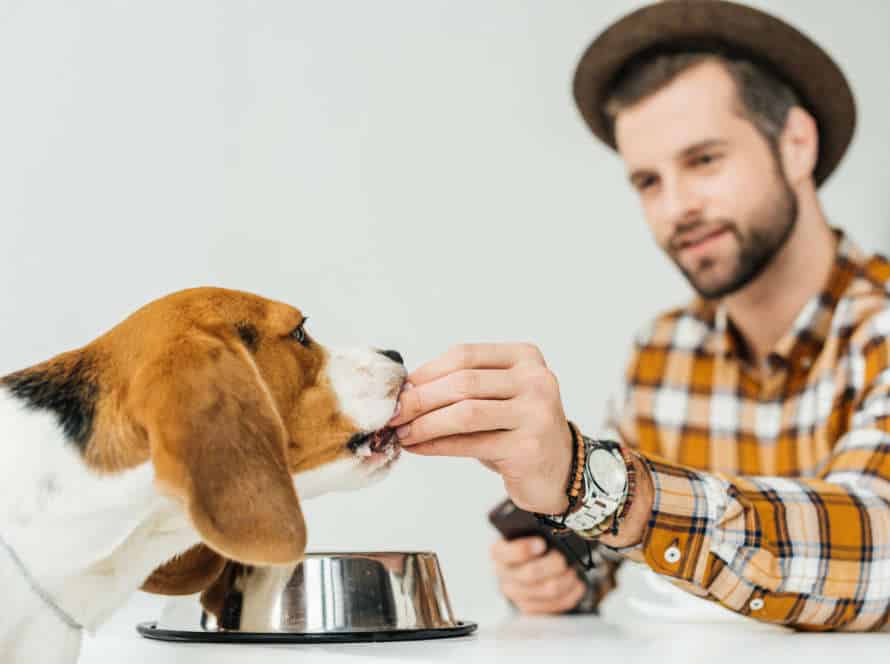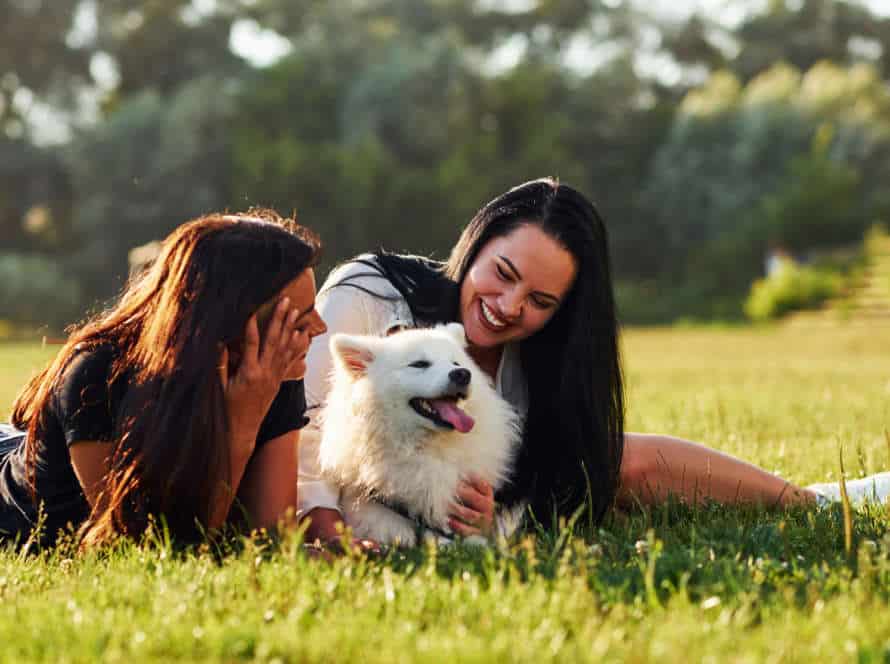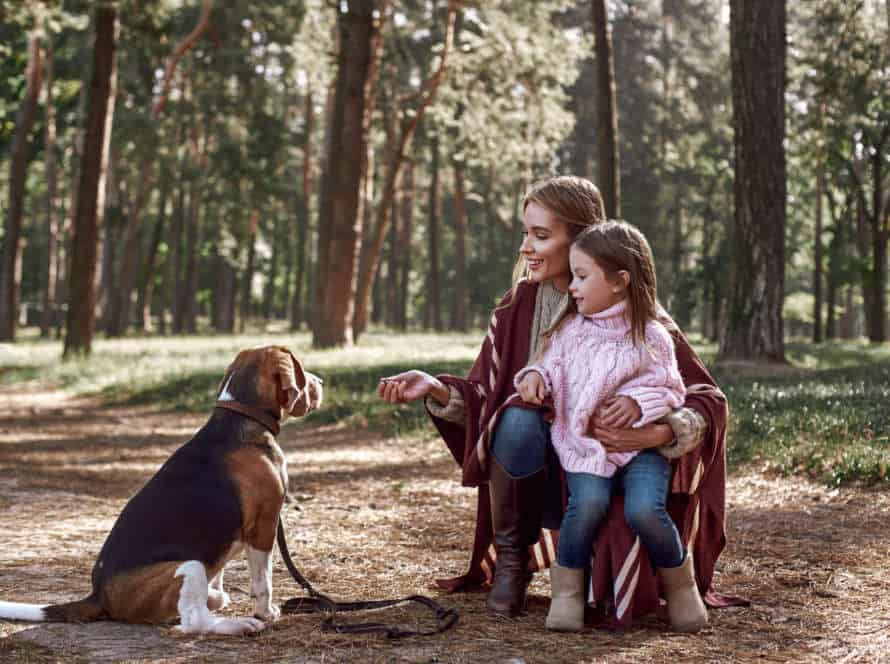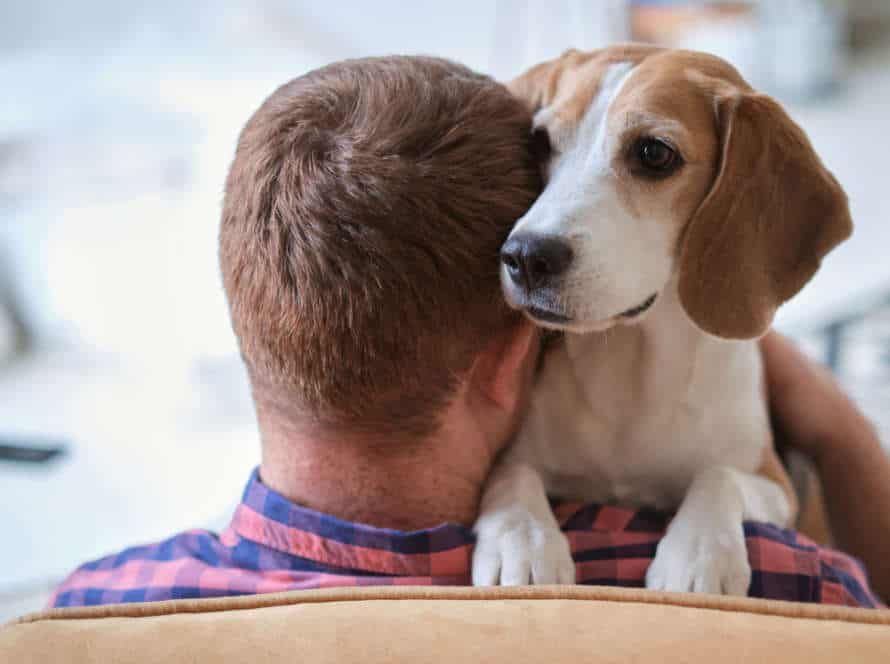A Guide to Proper Exercise for Your Growing Puppy
As your pup grows, it’s vital to guarantee they get enough exercise. Yet, it’s just as important to keep away from over-exercising them. Here’s a guide to help you decide the best exercise routine for your pup:
- Start with brief strolls – Begin with 5-10 minute strolls and gradually increase the length and intensity.
- Avoid high-impact activities – No running or jumping till your pup is at least one year old.
- Encourage playtime – Playtime is great for exercise as well as for bonding. Just make sure it’s supervised and not too rough.
- Keep it varied – Change up exercises and activities to keep your pup engaged and avoid boredom.
- Pay attention to your pup’s signals – If your pup looks tired or in pain, stop immediately.
By following these pointers, you can guarantee your growing pup gets the exercise they need without risking their health.
Understanding Your Puppy’s Exercise Needs
It’s vital to keep your pup fit and lively as they mature. Exercise is not only good for their physical health, but it’s also great for their mental and emotional well-being, plus their overall mood. Understand your puppy’s exercise needs so they can get the correct amount of exercise and stay healthy and content.
Importance of exercise for puppies
Exercise is just as important for puppies as it is for adult dogs. It helps with their growth and development; both physically and mentally. This is vital during their formative period. So, puppies need enough exercise to be happy and healthy dogs. Here are four reasons why exercise is essential for puppies:
- Healthy Growth: Exercise can help puppies with strong muscles, joints and bone density.
- Behavior: High energy puppies can benefit from regular exercise so their energy is used in positive behavior.
- Mental Health: Exercise reduces stress and anxiety in puppies, which leads to better mental health.
- Socialization: Taking puppies for walks and to the park introduce them to new sights, sounds and smells; something important for their development.
But, it’s essential to understand your puppy’s exercise needs. Too much exercise can be bad for their development. Pro tip: Consult your vet to figure out the best exercise plan for your growing puppy.
Factors to consider for exercise needs based on breed, age, and health
Exercising your pup is a must for its physical and mental growth. As a caring pet owner, you need to factor in breed, age, and health when deciding your pup’s exercise plan.
- Breed: Exercise needs vary by breed. Big breeds like Retrievers need more physical activity to avoid obesity. Small breeds like Chihuahuas may only need brief walks due to their short legs and breathing problems.
- Age: Puppies need a different exercise routine than adult dogs. Too much exercise can harm their joints which are still forming.
- Health: Dogs with health issues, like arthritis or heart trouble, may need to avoid strenuous activities as it can worsen their condition.
It’s best to check with your vet before deciding on an exercise program for your puppy to prevent over-exertion or under-stimulation.
Risks of insufficient or excessive exercise
Inadequate and too much exercise can be bad for your pup’s physical and mental wellness.
Insufficient exercise can cause obesity, weak muscles, and behavior issues such as chewing up things and yapping a lot. Pups need day-to-day exercise. How much and what type of exercise depends on their breed, age and health.
Conversely, over-exercising can lead to tiredness, joint issues and injuries. Pups are still growing, and too much exercise can be too much for their bones, joints and muscles.
So, get advice from the vet or a certified dog trainer. This will help you give your pup the right amount, type and frequency of exercise for their specific needs.
Types of Exercise Suitable for Puppies
Exercise is critical for your pup’s growth and health. It should be customized to your puppy’s age, breed, and wellbeing. What type and how much exercise is okay for puppies? This guide will cover the various types of exercise suitable for puppies.
They’ll need it for physical fitness and overall wellness.
Walking and Strolling
Puppies have lots of energy and need the right exercise to stay healthy and happy. Walking and strolling are ideal for growing puppies.
Walk them: Leash-walk or in a secure area outdoors, for at least twenty minutes twice a day. Don’t over-exert them or they may get injured.
Stroll: Indoors or out, so long as it’s safe. Let them explore at a gentle pace.
Other types of exercise: Fetch, tug-of-war, and swimming. Remember, puppies have delicate bones and muscles, so avoid high-impact activities that could cause injury.
Pro Tip: Ask your vet before starting a new exercise routine with your pup to make sure they’re fit for physical activity.
Playing Fetch or Tug-of-War
Fun activities, such as fetch and tug-of-war, are great for your puppy’s physical and mental health. But, be aware of some things when playing with them. Here are some tips:
- Tug-of-war can be fun for your pup to tone their muscles, but set rules. Teach your puppy to let go when you say so, and don’t tug too hard – it could lead to injury.
- Fetch can help with agility and reaction time, but don’t tire your pup out. Keep the playtime short, and adjust the activity to your puppy’s size and age.
- Keep hydrated! Give your pup plenty of water, exercise should be enjoyable, not exhausting.
Swimming
Swimming is a gentle exercise that’s great for puppies! It helps their health, muscles, and joints. Here’s how to introduce your pup to the water:
- Start with a calm body of water that’s not too deep.
- Support them as they learn to paddle and lift their legs.
- A life jacket can give them extra confidence and safety.
- Always stay close by while they swim.
- No strong currents, choppy water, or crowds!
- Start with shorter swimming sessions and increase duration as they get more comfortable.
Swimming is a perfect exercise for all breeds and is much gentler than running and jumping. Don’t forget to dry them off after—this will prevent skin problems.
Exercise Safety Tips for Puppies
Exercising your pup is essential for their happiness and health. But, beware of the dangers! So, to make sure your puppy has safe, fun work-outs, we have put together some tips. Here are the best ways to ensure your pup is enjoying safe exercise. Read on to find out more!
Signs your puppy can take up exercise
Start your pup’s exercise routine only when they are ready. Here are some signs of readiness:
- Age: 8-10 weeks old, depends on breed. Larger breeds may take longer.
- Vaccines: Vaccinate your puppy first. Protects them from diseases.
- Energy: If they’re playing energetically and moving easily, they’re ready.
- Joints: Breeds with joint issues (hip dysplasia) should see a vet first.
Start slow, increase physical activity gradually. Provide water. Have fun: use toys and play fetch.
Precautions to take before a workout
Before beginning any workout, it’s vital to take precautions to avoid injuries. Here are some:
- Stay hydrated. Drink water before, during and after exercising. This can stop dehydration, and reduce the risk of cramping and fatigue.
- Warm-up. Don’t start a workout without doing light cardio to raise your heart rate and loosen up your muscles.
- Gear up. Wear correct clothes and footwear to avoid injuries and be comfortable.
- Check the environment. Make sure it is hazard-free and clean.
- Listen to your body. Pay attention during exercise. Stop if you feel pain or odd sensations.
- These tips apply to puppies, too. A good exercise plan is essential for young pups – safety comes first.
Pro tip: Begin with a low-intensity workout, and gradually increase the intensity as your body gets used to it.
How to warm up and cool down
Warm up & cool down are key safety tips when exercising your pup. Here’s how to do it:
Warm up – Start with a 5-10 min low-intensity activity. Walking is great for raising your pup’s heart rate and getting their muscles ready for exercise. Stretches can help prevent injuries too.
Cool down – Finish each session with a 5-10 min low-intensity activity like walking. This will help lower your pup’s heart rate and avoid stiffness. Treats and praise are great rewards for a job well done!
It’s important to monitor your pup’s reaction to exercise to avoid fatigue, dehydration & injuries. Get advice from your vet on exercising your pup – it depends on their breed, age & health status.
Exercise Routines for Puppies
Exercise is essential for your pup’s wellbeing and growth. The amount and level of exercise relies on your pup’s breed and age. Pups need physical activity to stay fit, but make sure you don’t tire them out too much!
In this guide, we will talk about some suggested exercise plans for puppies.
Creating a consistent exercise schedule
It is essential to build a consistent exercise routine for your pup while they are growing. Here is a guide to the perfect puppy exercise plan:
- Exercise 5 minutes for each month of age, up to twice a day.
- Combine aerobic and strength activities.
- Aerobic exercises could be running, jogging, or walking on a leash.
- Strength exercises could consist of tug of war and fetch.
- Stay away from high-impact exercises such as jumping or running on hard surfaces, to avoid any joint damage.
- Start off with short sessions and gradually increase intensity and duration as the puppy grows.
- Note signs such as drooling, panting, or limping. If you observe any of these, contact your vet.
- Consistency is key. Stick to the plan to help them form good exercise habits for life.
Setting exercise duration and frequency based on age and breed
To keep your pup healthy and happy, it’s important to give them the right amount of exercise. Here are some guidelines by age and breed:
- For 8-16 weeks old puppies: Keep it short and frequent – 5-10 mins, 3-4 times a day. Include gentle play and safe exploration.
- For 4-6 months old puppies: Exercise for 15-20 mins, 3 times a day. Moderate play, training and structured walks. No sudden stops/starts.
- For 6-12 months old puppies: 20-30mins, 2-3 times a day. Longer walks, jogging and interactive play.
- Small Breeds: High energy and fast metabolism means more frequent exercise sessions.
- Large Breeds: Avoid overexertion and high-impact activities, especially in the first year. Swimming, hiking and long walks are good options.
Always check with vet before starting any new routine.
Incorporating variety to maintain interest
For your puppy’s healthy growth, it’s vital to mix up their exercise routines. They need the right amount of playtime and exercise. Here are some ideas to make sure your pup stays entertained and active:
- Introduce novel activities like jogging, running, swimming or games. These help develop your pup’s motor and cognitive skills.
- Get agility equipment to encourage exploration.
- Vary the time for exercises. As your pup grows, their energy and play needs will too.
- Growing puppies should go slow. Make exercises gradually harder as they become stronger and more mature.
- Have fun with it! With a bit of imagination, you can make exercise enjoyable and beneficial for your pup.
Common Mistakes to Avoid in Puppy Exercise
Exercising your puppy? Watch out! Making mistakes can lead to harm. Doing too much, too soon? Not enough rest? Overexertion? No no! In this guide, we’ll discuss common missteps and how to dodge ’em when working out with your pup.
Overexerting your puppy or starting too early
Many pet owners make a mistake by pushing their puppies too far or starting them with a strict exercise routine, which can lead to physical strain or injury. Just like humans, puppies need a gradual increase of physical activity to build strong muscles and improve coordination. Here are some do’s and don’ts to prevent these errors:
- Do: Give your puppy plenty of rest and downtime between activities to help them recuperate.
- Do: Avoid high-impact activities until your puppy is mature enough to handle them well.
- Don’t: Put them through hard surfaces like concrete or asphalt, as this can damage their joints.
- Don’t: Force your puppy to do activities it’s not comfortable with or skipping them. Instead, keep exercise sessions short and gradually increase difficulty and duration over time.
By following these puppy exercise tips, you’ll be able to provide a healthy, joyful life for your furry friend.
Using improper equipment, such as chain collars
When exercising your pup, avoid using chain collars. They can hurt the neck and spine, leading to long-term health problems. Young pups are still growing, so this is especially dangerous. Other mistakes to avoid are overexertion, hard surfaces, and not allowing the pup to rest and drink.
For safe exercise, start with short, gentle walks. Increase duration and intensity over time. Use a comfortable collar or harness that doesn’t cause discomfort, and promotes good posture and breathing. Make sure to give the pup rest and water, so it stays healthy and happy.
Neglecting your puppy’s hydration or nutrition.
Neglecting your pup’s hydration and nutrition can have serious consequences when exercising. As an owner, be aware of common mistakes and ensure proper hydration and nutrition for your pup.
Here’re the consequences:
- Dehydration: No hydration can lead to heat exhaustion, dehydration, and kidney problems.
- Poor Nutrition: Not enough nutrition can make your pup lethargic or sluggish.
- Overfeeding: Obesity and health issues like joint, heart, and lifespan issues.
- Underfeeding: Malnutrition, muscle wasting, and stunted growth.
Always provide your pup with fresh water and a balanced diet suited to their needs during exercise.
Frequently Asked Questions
Q: At what age can I start exercising my puppy?
A: Puppies can start light exercise as early as 8 weeks old, but intense exercise should wait until they are at least 6 months old.
Q: How much exercise does my growing puppy need?
A: Puppies should get at least 20 minutes of exercise per day for every month of age until they are fully grown. For example, a 4-month-old puppy should get about 80 minutes of exercise per day.
Q: What kind of exercises should I do with my growing puppy?
A: Low-impact exercises like walking, swimming, and playing fetch are great for growing puppies. Avoid high-impact exercises like jumping until your puppy is fully grown.
Q: How can I tell if I’m exercising my puppy too much?
A: Watch for signs of fatigue, limping, or soreness. If your puppy seems tired or in pain during or after exercise, it’s time to take a break.
Q: Can I exercise my puppy after they’ve eaten?
A: It’s best to wait at least an hour after your puppy has eaten before exercising them. This will help prevent digestive issues like bloating and discomfort.
Q: Do I need any special equipment to exercise my puppy?
A: A sturdy leash, a collar or harness, and a few toys are all you need to exercise your puppy. You may also want to invest in a dog crate or carrier for transporting them safely to and from exercise areas.


